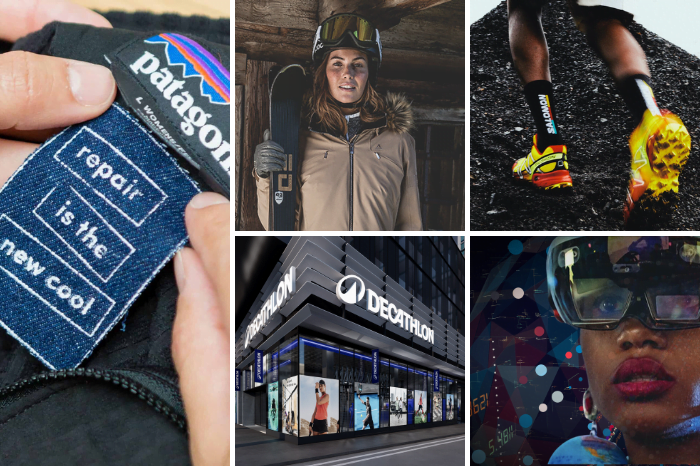Blending boundaries: The new era of outdoor fashion and the role of technology
The evolving landscape of outdoor fashion
The outdoor fashion industry is rapidly transforming, driven by a societal shift towards health and nature, fueled by the rise of remote work and social media influence. This evolution has blurred the lines between traditional outdoor gear and urban fashion, leading to the popularisation of the ‘gorpcore’ trend where items like Gore-Tex boots and bucket hats become staples in urban wardrobes.
Brands like Salomon have experienced exceptional growth by leveraging their strong reputation in outdoor sports gear and expanding their product lines to cater to broader market segments, including casual outdoor enthusiasts and urban consumers. Salomon’s commitment to innovation, both in product development and sustainability, has also played a crucial role. They focus on creating high-performance gear that is also environmentally responsible, aligning with the increasing consumer demand for sustainable products. This approach not only strengthens their market presence but also builds a loyal community around active and sustainable lifestyles.
As consumers embrace outdoor activities for both physical health and mental well-being, fashion brands are innovating with eco-friendly materials and designs that combine functionality with everyday style.
Embracing change: Challenges and opportunities
The dynamic shift in outdoor fashion poses both challenges and opportunities for brands. The market demands high-performance wear that doesn’t compromise on style, sparking a trend towards athleisure and functional yet fashionable apparel. Retail environments are also evolving; no longer just places for transactions, they are becoming community hubs offering workshops and events that emphasise skill development and environmental stewardship. This transformation reflects a broader change in consumer expectations, pushing brands to innovate in product development and customer engagement.
Decathlon’s strategic overhaul, driven by a commitment to sustainability and digital innovation under CEO Barbara Martin-Coppola, exemplifies the proactive steps companies are taking.
Their rebranding effort, aimed at “Moving People Through the Wonders of Sport”, not only refreshes their image but also refines their product lineup to appeal to a broader audience, emphasising the industry’s shift towards greater inclusivity.
Similarly, the collaboration between Adidas and Stella McCartney showcases the potential for merging high-performance sportswear with eco-conscious design principles. These developments underscore a pivotal moment for the outdoor fashion industry as brands and retailers navigate the complexities of modern consumer demands and the push towards sustainability and digital engagement. As consumer behaviour evolves and brands adapt, the outdoor fashion market is on the brink of a revolution, blending style with sustainability and functionality and redefining the essence of outdoor attire.
Tech as a trailblazer: Navigating the outdoor industry’s digital shift
Technological Enhancements and Functionality
Advancements in technology are critical in meeting the new demands of outdoor fashion consumers. AI and machine learning are optimising supply chains for better demand forecasting and material usage. Furthermore, integration of technologies like GPS and weather sensors in apparel enhances the functionality, appealing directly to consumers’ needs for safety and performance. These tech enhancements are streamlining online shopping experiences, significantly impacting how consumers interact with brands.
AI and digital tools
Generative AI is transforming the fashion and outdoor apparel sectors in profound ways. Olaf Akkerman, General Manager of Retail and Consumer Goods at Microsoft UK, underscores its potential:
“Generative AI provides a real opportunity for augmentation and acceleration in the fashion and outdoor apparel sectors in various ways, from creative design and production to marketing and sales.
“AI is enabling a more personalised customer experience, by offering tailored recommendations, virtual fitting rooms, and smart assistants. The technology can also help the industry cater to the increasing mission-based preferences and needs of consumers, while managing the reduction of waste and measuring environmental impact. The overall production process can be enhanced by predicting demand, managing inventory, and improving quality control.
“AI is not only a tool, but also a source of inspiration and innovation for the fashion and outdoor apparel sectors. By harnessing the power of AI, these sectors can create more value for their customers, while contributing to a more sustainable future.”
An example of AI’s transformative role is seen in the partnership between Microsoft and the Fashion Innovation Agency at the London College of Fashion. This collaboration has led to the creation of digital human stylists, utilising Microsoft’s AI, IoT, and Natural Language Processing technologies, in conjunction with Reactive Reality’s PictoFit technology. These digital stylists represent a breakthrough in personalised fashion advice, demonstrating the extensive potential of AI to revolutionise consumer engagement and streamline the fashion experience.
This integration of AI within the outdoor apparel industry not only meets current consumer demands but sets the stage for future advancements where technology and sustainability intersect to redefine the fashion landscape. Brands that leverage these innovations are poised to lead in creating more value for their customers and promoting a more sustainable future.














